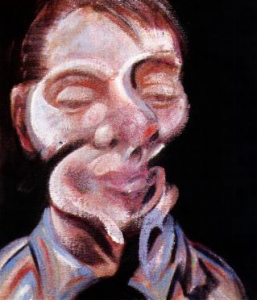Do you dare to play?
Playfulness may contribute to innovation and to transformational changes in organizations. On the individual level playfulness make us more creative and happier. Playing may help you to give substance to playfulness in your organization. What kind of play type are you?
Playfulness
As a playing person, homo ludens is able to shape his own future in the interaction with others.[1] People who are playing enjoy what they are doing. They feel that they have a grip on their own lives, which makes them more agile in an environment that is ambiguous and uncertain. In general, people with a playful attitude are more creative, happier and healthier.[2] Playfulness strengthens our adaptive skills and contributes to positive social relationships and greater self-awareness. Playfulness is combined with a positive and optimistic outlook and an open view of the world.[3]
Being playful is an attitude, a way you face life. People differ from others in the degree of playfulness they adopt in their way of thinking and behavior. This difference has to do with education and personality.[4] Stuart Brown describes various play forms that people use to give substance to playfulness:[5]
Being playful
The explorer is excited to discover new things. This can be done physically by visiting new places and leaving the comfort zone, mentally by reflecting on events or learning about new themes, or emotionally by being open to new feelings through meditation or art such as painting, dance, music and literature. Explorers broaden their mind, which stimulates playfulness and inspire others.
The artist takes pleasure in producing something like paintings, sculptures, dance, fashion, but also in activities such as gardening, developing new working methods, and designing houses, bridges or new products. The artist likes to show his or her creation to the world. It is about creating something that is fascinating or impressive and that touches on beauty.
The inventor wants to find a solution to an existing problem or create something new that makes life easier. The inventor plays with thoughts and materials, comes up with new combinations, makes new products, sees if something works and how something can be made better, more useful or more beautiful.
The collector takes pleasure in collecting interesting objects or experiences. Collectors often connect with like-minded people and exchange what they have discovered. They want to know how something works, they organize and find out what makes an object or experience attractive. They translate their experiences into new situations and contribute to innovations.
The active types are at their happiest when they move by walking, cycling, running, doing yoga, dancing or swimming. They want to feel their bodies and explore their limits. They often form groups to motivate each other. They are not concerned with being the best, but with the activity itself that creates new energy and allows new thoughts to flow.
The challenger enjoys competitive play and enjoys playing by challenging others and plays with the ambition to be the best. It is not necessarily about winning and losing, but about the dynamics that unfold between the players and the fun you can enjoy together.
The director enjoys inventing and performing scenes and realizing events. Directors bring others into the play, but are themselves the undisputed center of creativity and organizational strength. They show their creativity in coming up with interesting experiences and bringing people with different qualities together.
The joker plays with sense and nonsense and makes others laugh with special angles and unexpected quips. The court jester is the oldest form of the joker who could playfully contradict prevailing views. The joker invites people to look at themselves and brings up established habits, thus creating space to try something new.
The storyteller uses imagination and knows how to convert events and emotions into a story that invites you to look differently at what is going on. We find storytellers among authors of books, stage or film scripts and among creators of cartoons, films and vlogs. The storytellers create an imaginative world and know how to touch, inspire and make people think.
Playfulness
Playfulness is a common feature of the above roles. The players are intrinsically motivated and find opportunities to play everywhere. Through their activities they continue to develop, adapt and improve. With their investigative and playful attitude, they continuously learn about themselves and the world around them. They always see opportunities to take initiative and have fun.
It seems as if we are less willing to play as we get older, as if there is less room for playing when we are swallowed up by work, career, health, care for others and social obligations. Most adults see playing as something that children do, something that does not fit into the adult world. Many leaders do not play because they are burdened by responsibility and believe that leadership is a serious matter. But when we do not play and do not have fun, then at some point the question will arise whether we are still happy. A helpful question is what makes you really happy and what gives you energy. A second question that arises is how we can play more. [6]
Experiences of play theorists provide guidance on how to become homo ludens again and thus make room for fun, creativity, innovation and change.[7] A first step is to go back to the playful plays you played when you were young and the fun you had with them. Look back at what gave you energy and pleasure, what role you played and what you felt with the people you played with. This reflection helps with the question of what you can do to find back your playful self and allow it in your work and life. Then open up to humor and fun in the things you do. It helps if you realize that you don’t always have to be serious. It is important that you show yourself as a playful player. Allow yourself the space to be playful and ignore the fear of being irresponsible and immature. Improvise with playful working methods, try things out and see what the effects are. Find out for yourself what type of player you are, find others who encourage you to be playful and look for opportunities to use your play qualities. Playing is exploring new situations and pushing boundaries. Remember that you do not have to be in a playful position all the time. Find out for yourself when playfulness contributes to relaxation, creativity and innovation in the interaction with others. It is precisely in this collaborative play that we can shape change and innovation in a world that is ambiguous and dynamic.[8]
[1] Huizinga, J. (1938) Homo Ludens. A study of the play-element in culture. Edition 2014. Eastfort, CT: Matino Fine Books.
[2] Hendricks, T.S. (2014) Play as self-realization. Towards a general theory of play. American Journal of Play, 6, (2), 190-213.
[3] Lieberman, J.N. (1977) Playfulness: its relationship to imagination and creativity. New York: Academic Press.
[4] Bateson, P. & P. Martin (2013) Play, Playfulness, creativity and innovation. Cambridge: Cambridge University Press.
[5] Brown, S. (2009). Play: how it shapes the brain, opens imagination and invigorates the soul. New York: Penguin Group.
[6] Sicart, M. (2013) Play matters. Cambridge, MA: MIT press.
[7] DeKoven, B.L. (2014) A playful path. Pittsburg, PA: Carnegie Mellon University – ETC Press.
[8] Boonstra, J.J. (2018) Change as collaborative play. A positive view on changing and innovating organizations. Amsterdam: Boom | Management Impact.
Cambio como un juego
Los entornos de las organizaciones han experimentado grandes turbulencias en los últimos años. La globalización, la digitalización, la inteligencia artificial y la robótica, la nueva sociología del mercado laboral o el aumento de la complejidad de los mercados han contribuido a una nueva dinámica de incertidumbre y ambigüedad. Las organizaciones están cambiando internamente y en sus relaciones con las demás, pero este cambio puede verse como algo positivo. Este libro, dirigido a estudiantes, profesionales de la transformación organizacional, asesores en procesos de cambio y profesores universitarios y de escuelas de negocios, plantea una dinámica de juego para impulsar el cambio en las organizaciones y gestionarlo de forma exitosa. Un modelo que invita a la interacción y que ofrece un punto de referencia e inspiración a los jugadores que quieren contribuir al cambio y desarrollarse ellos mismos.
Cultural change and leadership
In February 2013 the English title Cultural Change and Leadership in Organizations was published. I am very happy with this publication, which is full of conceptual material, inspiring examples and concrete intervention to realize successful strategic and cultural change in organizations.
The art of consulting
My most relevant presentations about consulting are available here.
– Sensing and Inquiring
– Understanding organizational dynamics
– Intervening and guiding change
– Action Inquiry and change
More presentations available on
www.changeasplay.com
with video lectures as well.
Thoughtful consulting
Some of my publications on Consulting are available here:
– Interventions for cultural change
– Intervening and changing
– Understanding complexity
– Change Capacity
My complete list of publications is available here
Consulting with passion
My purpose as a consultant is being supportive and contributing to strategic and cultural change in organizations.
With passion and dedication
Dynamics in Organizations
Dynamics of Organizational Change and Learning is an academic handbook for people who are willing to take a deep dive into the dynamics of organizational change and development. Well known scholars contributed to this handbook, like Karl Weick, Robert Quinn, Chris Argyris, Thomas Cummings, Alfons Sauquet, Alice Lam, Gary Yukl, Chris Clegg and many others. This book was awarded a prize by a Dutch association for professionals in organizational science and change management.
Intervening and changing
Intervening and changing offers new perspectives on intervening and organizational change. It offers an overview of paradoxes and tensions in the field of organizational change and presents interventions that are based in social constructionism and social interaction theory. This book is the first comprehensive guide to offer successful new ways of organizationals to apply global thinking and democratic values to achieve innovations.



